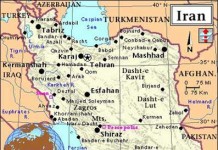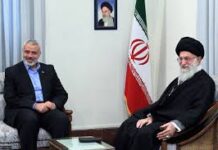Context
 While the world attention is focused on Gaza and the seemingly slow undoing of Middle East, another crisis is looming on the horizon. This one has to do with Afghanistan. On his visit to Afghanistan in June, US Secretary of State John Kerry had helped reach an interim agreement, stipulating the recount of all votes, and temporarily raised hopes. Now he is back again to keep the momentum going. Just like in Iraq and Palestine, ‘unity government’ and ‘power sharing’ are also the buzzwords in Afghanistan. With so much polarization, such a set up provides the best hope.
While the world attention is focused on Gaza and the seemingly slow undoing of Middle East, another crisis is looming on the horizon. This one has to do with Afghanistan. On his visit to Afghanistan in June, US Secretary of State John Kerry had helped reach an interim agreement, stipulating the recount of all votes, and temporarily raised hopes. Now he is back again to keep the momentum going. Just like in Iraq and Palestine, ‘unity government’ and ‘power sharing’ are also the buzzwords in Afghanistan. With so much polarization, such a set up provides the best hope.
Meanwhile, assessments continue if the Afghan army is ready for the difficult task at hand and the nerves are running high in the aftermath of the Iraq debacle. More and more the reviews are turning bleak. The death of Maj. General Harold Greene in a insider attack this week has once again raised questions about US Afghan strategy.
US policy circles continue to debate the strategic goals for the mission in Afghanistan and if that requires a quick draw down or preservation of what has been achieved so far. With the political and security transition at risk in Afghanistan, high-level diplomatic exchanges have also taken place between US and Pakistan. However, it was the appointment of the Chinese special envoy, Sun Yuxi, for Afghanistan, which was especially noteworthy. As China gets more interested in Afghanistan, it will be watching closely how the Pivot to Asia is evolving, and the Indian role in it.
Analysis
The Good and Bad Taliban
The diplomatic exchanges between Pakistan and US had a lot to do with the long awaited North Waziristan operation, and the accompanied policy change related to Good and Bad Taliban. On the US side, there remains a concern that Pakistan’s military operation has not targeted the Haqqani network, and for the most part its members may have escaped unharmed across the border.
From Pakistan’s side, there has been a strong negation of this viewpoint. The country maintains that it is now going after all brands of extremists. To amply convey its perspective, Pakistan sent its Special Assistant to the Prime Minister on Foreign Affairs, Tariq Fatemi, to Washington.
Without equal pressure from the Afghan side of the border, most extremists were likely to take refuge there, as has occurred in the past when Pakistan has conducted military operations. As they do, they become someone else’s headache, not Pakistan’s. This approach, however, does include the risk of continued cross border raids in to Pakistan from the Afghan side.
From what one can gather, Pakistan’s emerging strategy is premised on reestablishing its writ over FATA. Due to the unfolding situation of Afghanistan and Middle East, Pakistan finally seems to see the dangerous ramifications of the spreading influence of the non-state actors. If it is ready to revise the policy towards Good Taliban, is another mater.
The US Perspective
While Tariq Fatemi was in Washington, the retiring US Special Representative for Afghanistan Pakistan, James Dobbins was making rounds in the region and also met with senior military officials in Pakistan. He was probably gauging how much unity exists between Pakistan’s civilian and military officials on this significant policy change.
Judging from the joint statement that came out during the visit of John Kerry to India while attending the US-India strategic dialogue, Dobbins agenda with Pakistan may have also included a discussion on the nations posture towards Punjabi or India oriented jihadists (LeT).
China and India
As the Afghan situation becomes more uncertain, China and India are also worried; they both have security and economic interests at stake. While China appointed a special representative for the region, India has indicated it will buy arms from Russia to supply to Afghanistan. The country is also involved in training Afghan security forces, a concern for Pakistan. As a result of the crisis in Ukraine, it would be interesting to see how the Russian position evolves towards Afghanistan.
In a recent discussion on a blog linked to the Council on Foreign Relations, the Chinese involvement was portrayed in a positive light. However, it would be naïve to think that Chinese involvement in Afghanistan is singularly focused on extremism. How the Chinese move correlates with the ‘Pivot to Asia’ needs to be factored in as well. While the Pacific is the home sphere of influence, South and Central Asia represent the other flanks for China as it strives to secure its energy and trade routes.
If India were to become active in the pivot strategy, there is no doubt its security footprint in Afghanistan will not be taken lightly by China. In such a case, India will likely come under considerable pressure for acting as a strategic partner to the West, while at the same time remain a member of the BRICS.



